In the given table, Column I gives mass of a rotating cylinder, Column II gives its radius and Column III gives the angular speed.
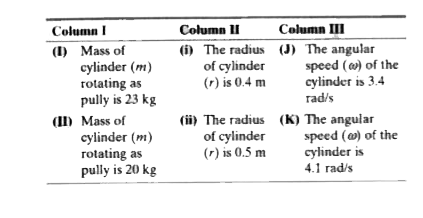

The combination whose rotational kinetic energy that equals 3.2 J is
(I) (ii) (J)
(II) (iii) (L)
(II) (i) (M)
(I) (ii) (M)
(1) - (a), (2) - (d), (3)- (c)
Topper's Solved these Questions
- RIGID BODY DYNAMICS-IIBOOK - RESNICK AND HALLIDAYCHAPTER - RIGID BODY DYNAMICS-IIEXERCISE - PRACTICE QUESTIONS (Integer Type)
2 Videos
- RIGID BODY DYNAMICS-IIBOOK - RESNICK AND HALLIDAYCHAPTER - RIGID BODY DYNAMICS-IIEXERCISE - PRACTICE QUESTIONS(Linked Comprehension)
3 Videos
- RIGID BODY DYNAMICS - IBOOK - RESNICK AND HALLIDAYCHAPTER - RIGID BODY DYNAMICS - IEXERCISE - PRACTICE QUESTIONS (INTEGER TYPE))
3 Videos
- TEMPERATURE, ZEROTH LAW OF THERMODYNAMICS AND THERMAL EXPANSION BOOK - RESNICK AND HALLIDAYCHAPTER - TEMPERATURE, ZEROTH LAW OF THERMODYNAMICS AND THERMAL EXPANSION EXERCISE - PRACTICE QUETIONS (Integer Type)
4 Videos
Similar Questions
In the given table, Column I gives type of motion, Column II gives the path traced and Column III gives other characteristic of the motion.
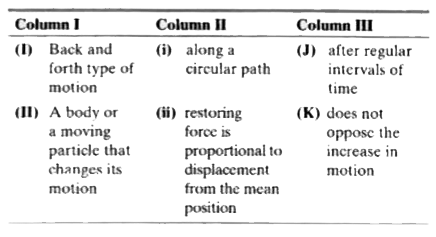
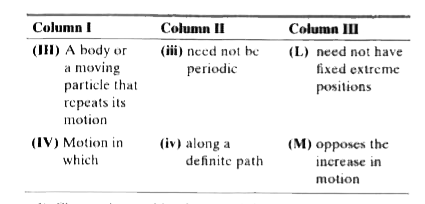
Choose the combination that defines the characteristics of periodic motion.
View SolutionIn the given table, Column I gives type of motion, Column II gives the path traced and Column III gives other characteristic of the motion.
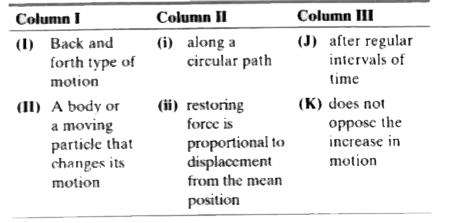

Choose the combination that defines the characteristics of simple harmonic motion.
View Solution
Knowledge Check
In the given table, Column I gives frequencies of different waves, Column II gives their examples and Column III gives their graphical representation.
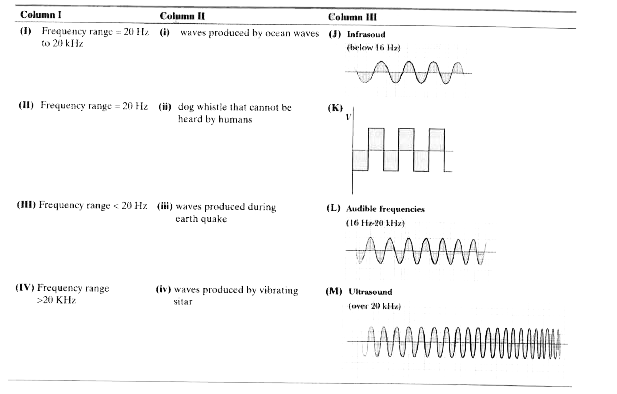
What are the characteristics of ultrasonic waves?A(IV) (ii) (M)B(I) (iii) (L)C(II) (iv) (L)D(III) (ii) (M)In the given table, Column I gives frequencies of different waves, Column II gives their examples and Column III gives their graphical representation.

What are the characteristics of infrasonic waves?A(II) (i) (K)B(I) (i) (L)C(III) (iii) (J)D(I) (iv) (L)In the given table, Column I gives frequencies of different waves, Column II gives their examples and Column III gives their graphical representation.
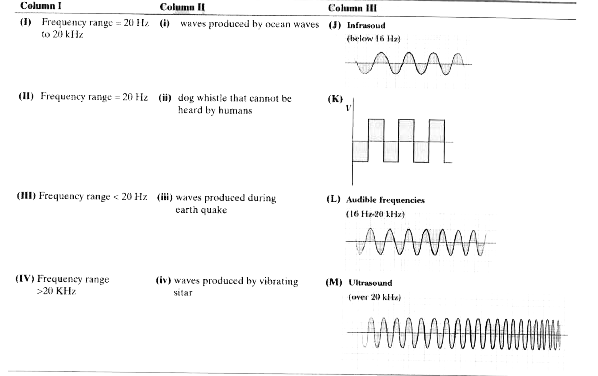
What are the characteristics of auible waves?A(I) (iv) (L)B(II) (iv) (J)C(II) (i) (M)D(II) (i) (K)
In the given table, Column I gives type of motion, Column II gives the path traced and Column III gives other characteristic of the motion.
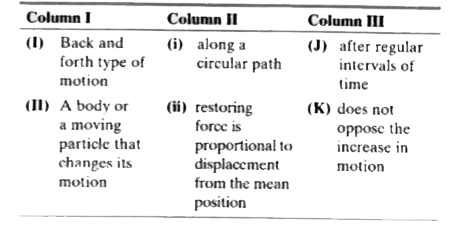

Choose the combination that defines the characteristics of simple harmonic motion.
View SolutionIn the given table, Column I gives type of oscillation, Column II gives change in amplitude of oscillation and Column III gives examples of these types of oscillation.

The combination that defines the features of forced oscillation is
View SolutionIn the given table, Column I gives type of oscillation, Column II gives change in amplitude of oscillation and Column III gives examples of these types of oscillation.
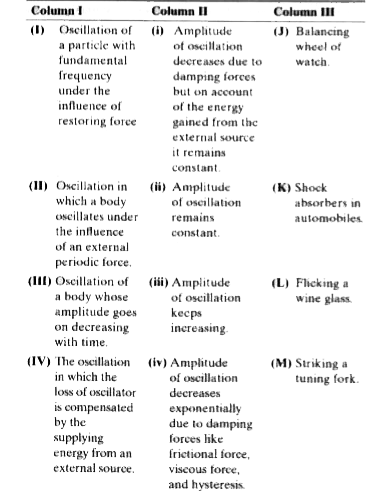
The combination that defines the features of damped oscillation is
View SolutionIn the given table, Column I gives type of oscillation, Column II gives change in amplitude of oscillation and Column III gives examples of these types of oscillation.
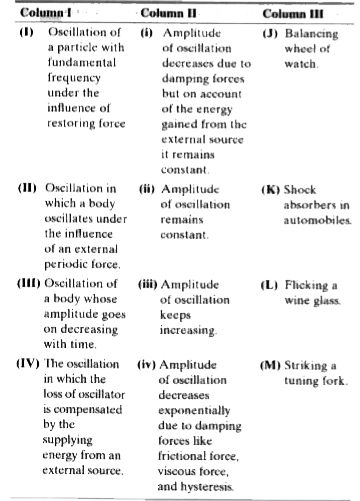
The combination that defines the features of free oscillation is
View SolutionA solid cylinder of mass M and radius R rotates about its axis with angular speed ω. Its rotational kinetic energy is
View Solution
